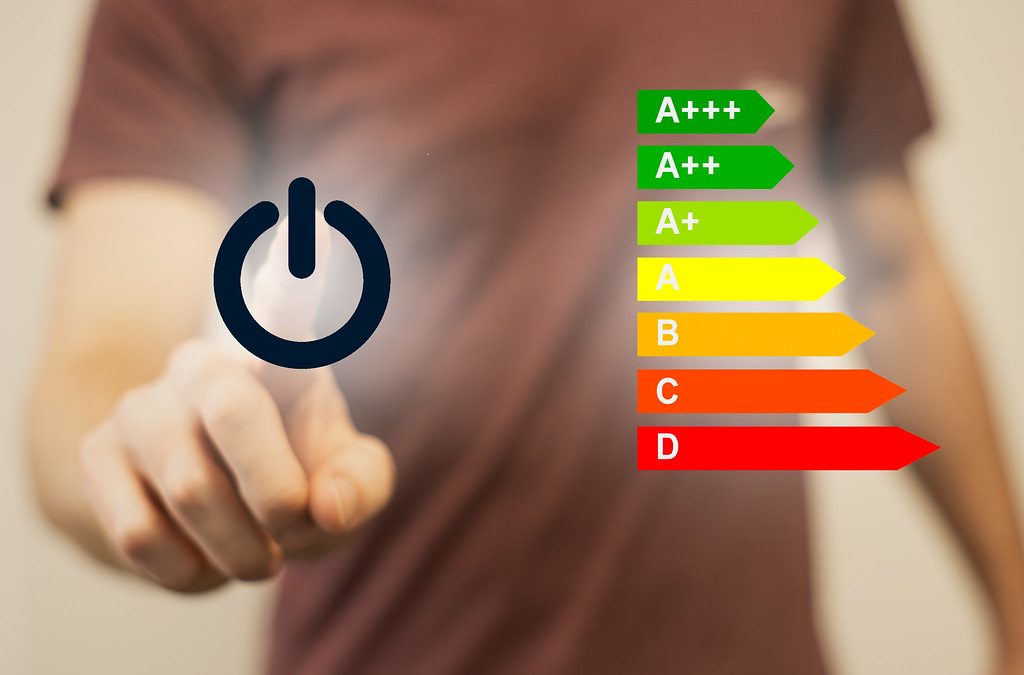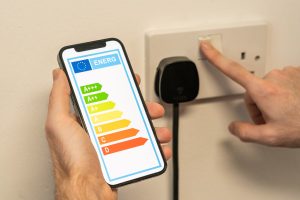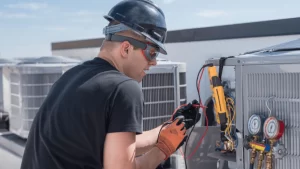As summer arrives in New Jersey, keeping your home cool becomes a top priority. But with that comfort often comes higher energy bills—especially if your HVAC system is outdated or inefficient. That’s where SEER ratings come in. SEER, which stands for Seasonal Energy Efficiency Ratio, is a key measurement that determines how efficiently your air conditioning system operates throughout the cooling season.
Understanding SEER ratings can empower homeowners to make more informed decisions when choosing, upgrading, or maintaining an HVAC system. Whether you’re looking to enhance comfort, reduce your environmental impact, or simply get more from your cooling system without spending more on electricity, SEER is a term worth knowing. It’s not just a number—it’s an indicator of performance under seasonal demand, and ultimately, how much you’ll spend keeping your space cool and comfortable.
What Is a SEER Rating?
SEER measures the efficiency of an air conditioning system by calculating the total cooling output over a typical cooling season divided by the total electrical energy input during that same time. The higher the SEER rating, the more efficient the system. It offers a standardized method to compare the efficiency of different air conditioners and heat pumps.
In simpler terms: A higher SEER means more cooling using less energy. For homeowners, this equates to significant long-term energy savings, reduced strain on the electrical grid, and a smaller environmental footprint. It also plays a role in regulatory standards, product labeling, and eligibility for energy efficiency rebates and tax credits.
SEER ratings are established by the U.S. Department of Energy and are used as a benchmark for residential cooling equipment across brands and models. The efficiency rating reflects how well a unit performs across a range of outside temperatures, making it a more realistic measure of energy performance.
Why SEER Ratings Matter for NJ Homeowners
New Jersey experiences hot and humid summers, which puts considerable demand on your cooling system. If your system isn’t efficient, it will work harder and longer to maintain a comfortable indoor temperature—leading to increased wear and tear and elevated energy use. This not only stresses your unit but also impacts indoor comfort and air quality.
Choosing an HVAC unit with a higher SEER rating ensures your system can meet the seasonal demands of New Jersey weather without consuming excess energy. It helps keep monthly energy usage lower, improves long-term equipment reliability, and can even lead to fewer maintenance calls. Over time, an efficient system can extend the service life of your unit and keep your household more consistently comfortable.
For homeowners conscious of their carbon footprint, selecting a unit with a high SEER rating can make a meaningful difference. It’s a smart investment in both sustainability and home economics, especially with available local energy efficiency incentives.
What SEER Rating Is Considered Good?
The federal minimum SEER rating for new residential air conditioners varies by region. In New Jersey and other northern states, the minimum SEER for new systems is 14. That said, many modern systems exceed this baseline and provide much higher efficiency. These improvements stem from technological advancements such as inverter-driven compressors and smarter system controls.
Here’s a general breakdown of SEER ratings:
- 14–15 SEER: Standard efficiency; meets minimum regulations. These units are suitable for smaller homes or spaces with modest cooling demands. While they are compliant with current laws, they may not offer the same energy savings or quiet performance as higher-rated systems. Still, they are a step up from legacy units and can serve as budget-friendly upgrades.
- 16–18 SEER: High-efficiency systems that offer improved performance and lower energy usage. These units often include features like two-stage compressors and enhanced airflow controls, which contribute to quieter and more consistent temperature management. They strike a strong balance between affordability and energy conservation, making them a common choice among homeowners looking to upgrade.
- 19+ SEER: Premium-efficiency systems; usually feature advanced technologies like variable-speed compressors. These systems are designed for maximum comfort and performance, adapting in real time to indoor and outdoor conditions. They also provide excellent humidity control and quieter operation, making them ideal for those prioritizing both comfort and savings.
The right SEER rating for your home depends on your usage patterns, home size, insulation quality, and personal comfort expectations. A professional HVAC consultation helps determine the most efficient and cost-effective solution tailored to your needs.
How SEER Affects Real-World Energy Use
A more efficient system doesn’t just cool better—it cools smarter. SEER ratings directly influence how much electricity your HVAC system consumes during operation. A higher-SEER unit cycles more efficiently and less frequently, reducing wear on components and extending equipment life.
Higher-SEER systems also tend to maintain more consistent indoor temperatures and better manage humidity, improving overall comfort. Instead of abrupt on-and-off cycles that spike energy usage, efficient systems deliver steady performance. This reduces load on the power grid and minimizes peaks in energy consumption.
Over time, homeowners will notice the difference in comfort, air quality, and utility bills. While SEER isn’t the only factor in cooling efficiency, it plays a crucial role in determining how effectively your system turns electricity into comfortable indoor air.
Types of SEER Systems: Single, Two-Stage, and Variable-Speed
1. Single-Stage Systems
These systems operate at full capacity every time they’re turned on. They’re the simplest and most common models and typically offer SEER ratings in the 14–15 range. While they’re cost-effective upfront, their constant cycling can cause inconsistent temperatures and higher energy usage.
Single-stage systems are best suited for smaller homes or areas with mild climate demands. They are reliable but may not provide the energy savings or comfort consistency of more advanced systems. For homeowners with older systems, a modern single-stage unit can still represent a considerable upgrade.
2. Two-Stage Systems
Two-stage systems can operate at a lower or higher capacity depending on the cooling load needed. They run at a lower speed most of the time, switching to high when necessary. This results in more even temperatures and quieter operation.
They often feature SEER ratings between 16 and 18. These systems are well-suited for larger homes or those looking for better energy efficiency without investing in premium-tier equipment. The dual-stage function also improves humidity control, making your home feel cooler even at higher temperatures.
3. Variable-Speed Systems
Variable-speed systems are the most sophisticated and efficient. They continuously adjust their cooling output based on real-time indoor and outdoor conditions. This means your system only uses as much energy as necessary to maintain the desired comfort level.
With SEER ratings often exceeding 19, these units offer unparalleled efficiency, precise temperature control, and the quietest operation. Ideal for homeowners prioritizing comfort, energy savings, and long-term performance, these systems also enhance air filtration and moisture control.
Factors That Affect SEER Performance in Your Home
While SEER ratings offer a strong baseline for comparing systems, real-world efficiency depends on several home-specific factors. A unit with a high SEER won’t reach its full potential if other elements of your home are inefficient.
- Ductwork Design and Condition: Leaky, dirty, or poorly insulated ductwork can undermine efficiency. Proper duct sealing and design ensure that cool air reaches its destination without loss. Regular inspection and maintenance can restore full system performance.
- Home Insulation: Insufficient insulation allows conditioned air to escape, forcing your system to run longer. Upgrading attic and wall insulation helps stabilize indoor temperatures and reduces cooling demand. It’s one of the most cost-effective ways to boost energy efficiency.
- Thermostat Compatibility: High-SEER systems perform best when paired with smart thermostats. These devices allow for better temperature scheduling and system optimization. Remote access and energy usage insights also empower homeowners to fine-tune settings.
- System Sizing: A system that’s too small will struggle, while an oversized unit will short-cycle and waste energy. A professional load calculation ensures the system is properly matched to your home’s square footage, insulation, and layout.
Let ECMC HVAC Help You Choose the Right SEER System
At ECMC HVAC, we help New Jersey homeowners navigate the options and choose HVAC systems that align with their comfort goals, budget, and long-term energy savings. Our team looks at the whole picture—from system sizing to ductwork and insulation—ensuring your investment pays off in performance and reliability.
We offer in-home consultations, full HVAC system replacements, and regular maintenance services to keep your SEER-rated system running efficiently. Whether you’re building new or upgrading an aging unit, our certified technicians will guide you through a stress-free installation process.
We also stay up-to-date on local utility rebate programs and energy efficiency incentives. If you’re eligible, we help you apply for available savings so you can get more value from your HVAC investment.
Contact ECMC HVAC Today
📍 Address: 80 Leonardville Rd, Belford, NJ 07718
📞 Phone: (732) 936-9850
🌐 Website: https://ecmchvac.com
📧 Email: info@ecmchvac.com
🕒 Hours: Monday – Friday | 8:00 AM – 5:00 PM
Stay efficient and cool all summer. Contact ECMC HVAC to explore the best SEER-rated systems for your NJ home.



